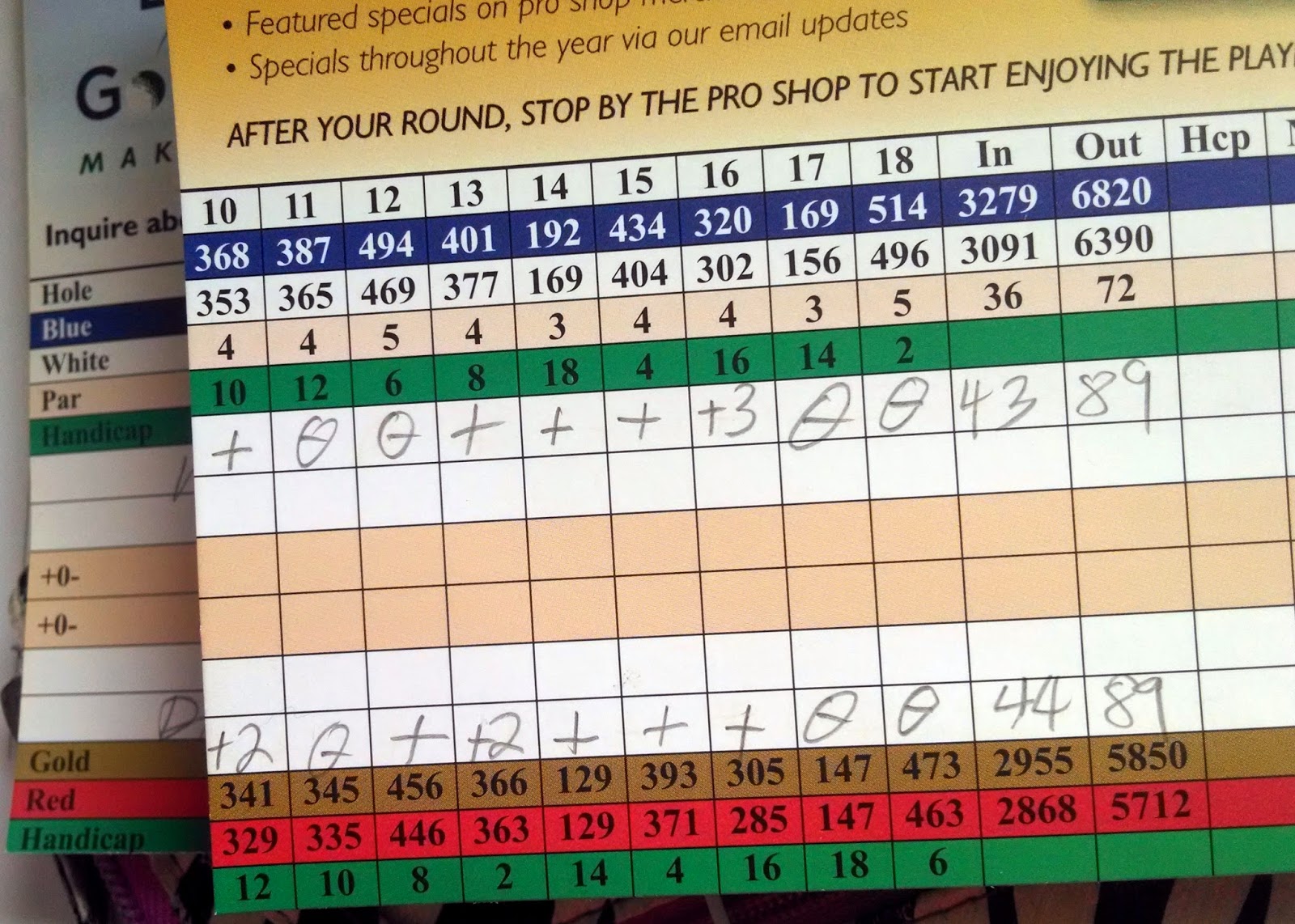Without a context, numbers don't mean much. Consider the number 89. As a weather temperature, it means balmy and warm. As a roast chicken temperature, it means a trip to the doctor for food poisoning. Eighty-nine happens to be the golf score I shot yesterday. It's not the lowest score I ever shot. (That was an 87.) But it is the lowest score I've shot in almost two years. Last week, I shot a 94, then a 93, and by the weekend I was determined to go sub-90.
I had a Sunday morning tee time with hubby at the harder of the two nearby public courses. I was feeling pretty good, despite a callous on my foot and some bruising from a stubbed toe. I decided to ride a cart with hubby to save my tootsies from unnecessary stress. It was Mother's Day, so the course was deserted, except for a fivesome of what appeared to be three moms and two dads, raucously enjoying a few child-free hours. At first I was annoyed that they played so slowly (and loudly). But then I decided to relax and enjoy the extra time.
Typically, I play as fast as possible. One's position on the course is directly behind the group ahead of you, as they say. But today, since hubby and I had lots of waiting time for the revelers ahead to clear, it meant I could take my time to do things like get target distances with our new laser rangefinder, take practice swings, and, most importantly, read putts.
Here's my technique for reading putts: I stand a few yards behind the ball and crouch down, analyzing how the green breaks, imagining how the ball will roll to the hole. Then I stand up and, without taking my eyes off the hole, take my stance behind the ball. My feet are not too wide apart, but not too narrow either. I look down and make sure the ball is slightly left of center in my stance, something that someone once told me I should do since I am right-eye dominant. Then, I look at the hole again and imagine the path the ball would take if it were rolling backward from the hole to where it is in my stance. I let my eyes follow the path slowly back and forth at least once, visualizing and ingraining the ball's path in my short-term memory. (This "tracking" technique is something I read about in a golf magazine once.) The last visualization is always a backtrack from the hole to the ball, and as my eyes meet the ball again, I take my putter smoothly back and forward and through. The whole process reminds me of a Newton's cradle, where my visualized energy somehow transfers to the ball, then the putter head, then back to the ball, so it moves exactly at the speed and trajectory that I visualized. I don't why this technique works for me, but it does -- when I put my mind to it.
Yesterday, I had more time than usual to put my mind to putting. And I think that's what helped me go low. I wasn't driving as far as I have in the past, but my chipping and putting held steady. As you can see by the scorecard, I had a string of bogeys on the front nine, with one double-bogey and a par. On the back nine, I had two double-bogeys, but made up for them with pars. (You can also see by the scorecard that hubby has much better handwriting than me. Compared to his neatly written symbols, my typical scorecard looks like a serial killer's victim count.)
On the last hole, a par 5, I got on in 4 strokes, and literally held my breath while making that last putt, knowing it could mean the difference between a nice 90 or an ecstatic 89. When I made the putt, I almost couldn't breathe. In the car, hubby showed me the scorecard and I saw that he also shot an 89. This is not a great score for him, since his record low is 79, and he typically shoots in the low 80s. If Martin Kaymer, who just won The Players tournament, shot an 89, he would probably hang up his clubs for good. But for me, 89 is an excellent score. Like I said, without a context, numbers don't mean much.


No comments:
Post a Comment